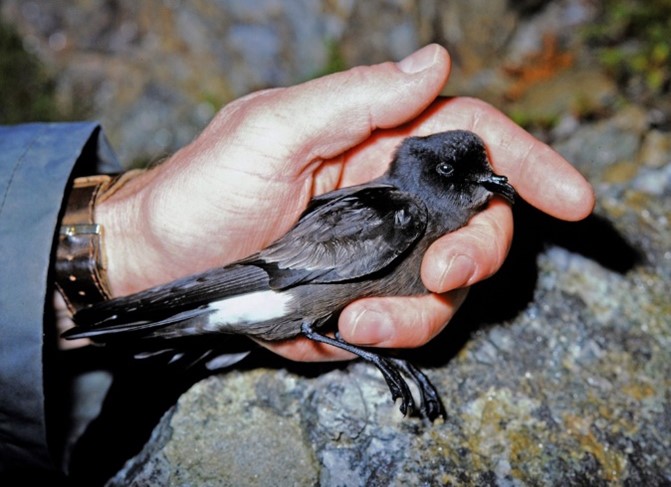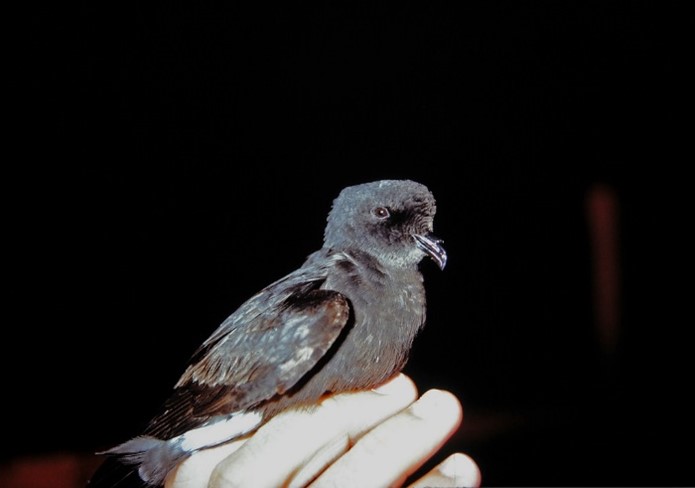European Storm Petrels at Turnberry Point
During 1980, my interest in seawatching had got to the point where Turnberry lighthouse had almost become a second home. However, it kept on producing interesting seabirds and the head greenkeeper at the golf course was happy to allow me to take my car all the way down to the point, thus avoiding the need to carry tripods, telescopes etc,
One species in particular had always proved particularly difficult to observe, let alone have any idea of what its true status was within Ayrshire. European Storm Petrels were normally seen in really rough summer or early autumn weather or, if you were very lucky, you might see a few feeding offshore in calm summer weather towards dusk. One or two other birders in Britain had just begun to use tape lures at night, and were catching birds in mist nets for ringing purposes. This seemed like a good idea, since we didn’t have much of an idea of the birds’ whereabouts once the sun went down.
If the hotel manager were to grant us permission to go down the golf course road at night, we could try to catch some birds too. I say “we,” but there weren’t a lot of local birders willing to give up their nightly slumbers to take part in this exploit. Fortunately, Iain Leach, who lived in Alloway, was interested – and he knew a bit about electronics and how to build an amplifier! He was also a qualified ringer. Despite the unusual nature of the request, the hotel manager, Mr Rouse, readily agreed to our traversing the golf course in the wee small hours.
The most reliable dates for birds coming into the Clyde to feed appeared to be late July-early August, so we chose a starlit, calm night for our first attempt. Iain’s amplifier was excellent, and I’m sure birds would’ve heard the tape from Ailsa Craig! All was quiet, with no sign of anything until, just after midnight, a shape flitted past the mist nets and back into the darkness. Shortly after that, one flew directly into the nets and was duly retrieved. I recall thinking to myself that the plumage was velvety soft and the tiny black bill looked like it had been varnished. What a treat! Once measured, weighed, checked for brood-patch and ringed, it sat quietly on Iain’s hand before heading back out to sea.
By the end of the night, we had caught 3 more. One bore a BTO metal ring – a breeding bird from St Kilda! Unexpected would be putting it mildly, but a bird ringed at Turnberry later that year turned up in the breeding colony at St Kilda. So, our midnight travellers had come a long way, and had probably been at sea for a few days. This made our drive home seem a bit shabby. As the years went by, more ringers tried their luck at headlands to the north of the county, such as Troon and Portencross, and found the same thing happening – birds coming in to feed during darkness, close to shore, and keen to check out any calls which sounded familiar.
The owners of Turnberry Hotel and Golf Course were always very obliging, and many head greenkeepers, like George Brown, showed a genuine interest in the wildlife associated with the area. However, they probably remained blissfully unaware of what went on just offshore in the hours of darkness. The two photos taken on that first night show what they were missing.


Angus Hogg
17 October 2022